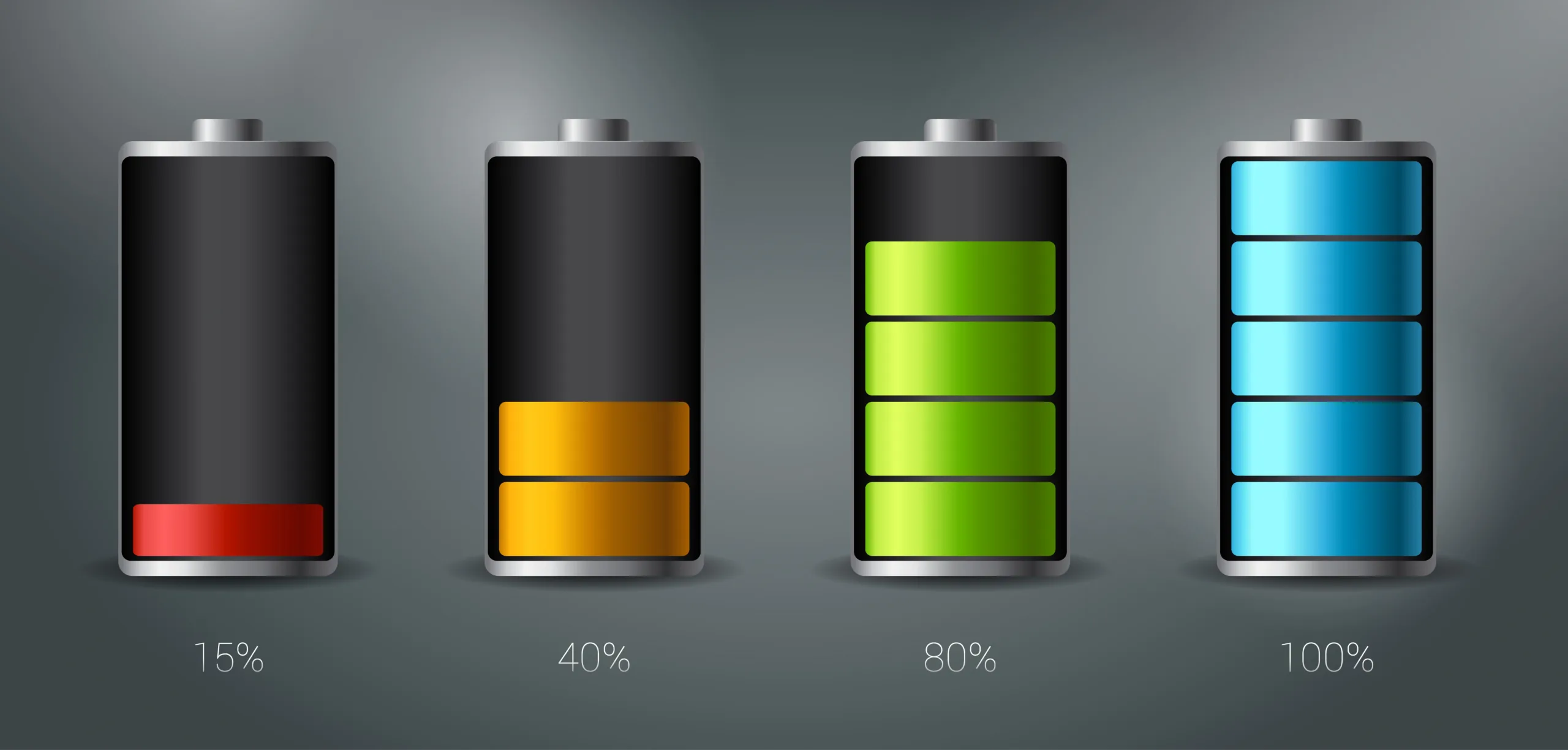Calculate how long your battery will run
Optimize your power systems with accurate runtime predictions with our Battery Runtime Calculator
Battery Parameters
Runtime Results
Estimated Runtime
Usable Capacity
Load Current
Recommended DoD
Common Runtime Examples
| Battery Size | 100W Load | 200W Load | 500W Load | 1000W Load |
|---|---|---|---|---|
| 50Ah (12V) | 5.4 hours | 2.7 hours | 1.1 hours | 0.5 hours |
| 100Ah (12V) | 10.8 hours | 5.4 hours | 2.2 hours | 1.1 hours |
| 200Ah (12V) | 21.6 hours | 10.8 hours | 4.3 hours | 2.2 hours |
| 100Ah (24V) | 21.6 hours | 10.8 hours | 4.3 hours | 2.2 hours |
| LiFePO4 100Ah | 12.9 hours | 6.5 hours | 2.6 hours | 1.3 hours |
Ultimate Guide to Battery Runtime and Energy Storage Optimization
Understanding battery runtime is essential for designing solar backup systems, RV power setups, off‑grid cabins, or critical infrastructure. Battery runtime refers to the continuous time a battery keeps devices powered before needing recharge. With many variables like chemistry, load demand, and environmental conditions, using a reliable battery runtime calculator helps you size your system accurately and avoid surprises.
What Determines Battery Runtime?
Battery runtime depends on more than just capacity (Ah or Wh). Factors include battery chemistry, load profile, ambient temperature, discharge rate, and system inefficiencies. An effective battery runtime calculator takes all these into account to offer realistic runtime estimates.
Battery Chemistry: LiFePO₄ vs Lithium‑Ion vs Lead‑Acid
Battery chemistry impacts both efficiency and available energy. LiFePO₄ chemistry provides up to 95% usable capacity with stable voltage output, making it ideal for long‑life applications. Lithium‑ion offers good performance but reduced cycle life under deep discharge, while lead-acid delivers lower usable capacity and suffers from voltage sag under heavy load.
Depth of Discharge (DoD) and Battery Lifespan
Depth of Discharge indicates how much battery capacity is used. While deeper discharge boosts runtime, it also limits lifespan. Optimal DoD typically includes LiFePO₄ at 90–95%, lithium‑ion at 80–85%, and lead‑acid limited to 50–60%. A robust battery runtime calculator models DoD to ensure accurate sizing and longevity.

Comparison of different battery technologies and their characteristics
How Temperature Affects Battery Efficiency
Ambient temperature has a significant effect on performance. Cold (below 0 °C) reduces capacity by up to 50%, while heat increases self-discharge and accelerates aging. The optimal range is 20–25 °C (68–77 °F). A quality calculator adjusts runtime estimates based on temperature derating for precise results.
Accounting for Discharge Rate (Peukert Effect)
High discharge rates reduce effective capacity—especially in lead‑acid batteries. To model this, consult how Peukert’s Law quantifies runtime reduction at higher currents. A modern battery runtime calculator should include this law for more accurate predictions under variable loads.
Power Consumption & System Efficiency
Runtime varies based on load profile. Constant DC usage yields predictable output, while inverter AC loads sacrifice 10–15% efficiency. High startup currents—like those from motors or compressors—are also critical to model accurately. Advanced runtime calculators incorporate these real-world conditions for better estimation.
Residential Solar Backup Systems
To maintain power during grid outages, correctly sizing your backup battery is crucial. Residential systems typically range from 5 kWh–30 kWh. Using a battery runtime calculator enables homeowners to forecast how long essential systems (lights, fridge, Wi‑Fi) will operate, especially when integrated with smart load management.
Off‑Grid Energy Solutions
Off-grid systems need autonomy over several days (3–7 days). Battery banks must be appropriately sized to cover low-sun periods. A comprehensive battery runtime calculator factors in seasonal solar variability, daily usage patterns, and charging availability to size systems accurately.
Commercial & Industrial Energy Storage
Commercial systems depend on runtime planning for uses like load shifting and backup power. In critical facilities (data centers, telecom), runtimes may need to support generator handover (5–15 minutes) or full battery backup (up to 4 hours). An advanced calculator handles complex load profiles and system inefficiencies to guide capacity planning effectively.

Commercial and industrial energy storage systems enable businesses to store excess energy
Mobile, Marine & V2H Battery Systems
Mobile applications—including RVs, marine setups, and vehicle-to-home systems—require compact yet high-performance batteries. EV batteries (50–100 kWh) can supply homes in outages. Use a purpose-built battery runtime calculator to estimate consumption based on travel, appliance load, and charging infrastructure.
Renewable Energy, Grid Integration & Microgrids
Batteries smooth renewable generation and enable grid services like frequency regulation. Microgrids serve multiple load types—residential and commercial—and demand precise planning. Modern runtime calculators integrate weather forecasts and predictive load models for energy shifting and resilience.
Next‑Gen Technologies & Smart BMS
Emerging battery chemistries like solid-state, lithium-sulfur, and sodium-ion promise higher energy density and extended runtime. Paired with AI-driven battery management systems, they offer enhanced runtime prediction, optimized charging, and predictive maintenance.
Cloud Monitoring & Second‑Life Battery Integration
Cloud-enabled systems provide remote monitoring, usage analytics, and firmware updates. Many EV batteries retain 70–80% capacity for second-life applications. A full-featured battery runtime calculator should support lifecycle tracking, efficiency insights, and maintenance alerts.
Battery Runtime Calculator – FAQs
Use this formula: Runtime = (Ah × V × DoD × Efficiency) ÷ Load (W)
- LiFePO4: (Ah × V × 0.95 × 0.97) ÷ W
- Lithium-ion: (Ah × V × 0.8 × 0.92) ÷ W
- AGM/Lead-acid: (Ah × V × 0.5 × 0.85) ÷ W
Adjust for inverter loss, temperature, and battery age for real-world results.
LiFePO4 (200W load): ~5.5 hours
AGM: ~2.5 hours
Lithium-ion: ~4.4 hours
Runtime depends on appliance wattage, battery type, and DoD.
- LiFePO4: Highest usable capacity (up to 95%) and 3000+ cycles
- Lithium-ion: Moderate capacity (80–85%), 500–1500 cycles
- AGM/Lead-acid: 50–60% usable, 300–800 cycles
LiFePO4 offers the best value over time despite higher upfront cost.
Formula: Battery Capacity (kWh) = Load × Days × Safety ÷ DoD
Example: 8kWh/day × 2 days × 1.2 ÷ 0.9 = 21.3 kWh battery needed
Account for critical loads, solar input, and inverter losses.
- Temperature: Cold reduces capacity by up to 50%
- Battery age: Capacity fades over time
- High discharge rates: Reduce effective Ah (Peukert effect)
- System losses: Inverter and wiring reduce efficiency
Multiply theoretical runtime by efficiency and environment factors for accuracy.
- Use correct charge settings (smart chargers)
- Keep DoD within safe limits (50% for lead-acid, 90% for LiFePO4)
- Maintain optimal temperature (15–25°C)
- Run high loads during solar peak (if solar-powered)
- Monitor voltages and cell balance regularly
They’re 80–95% accurate under ideal conditions. Factors like age, temperature, inverter loss, and Peukert’s Law cause real-world variation. Always use a 15–20% safety margin.
- Install fuses, breakers, and disconnects
- Ventilate lead-acid batteries to avoid hydrogen buildup
- Use fire-rated enclosures for lithium systems
- Follow manufacturer specs for charging/discharging
- Monitor temperature, voltage, and system alarms
